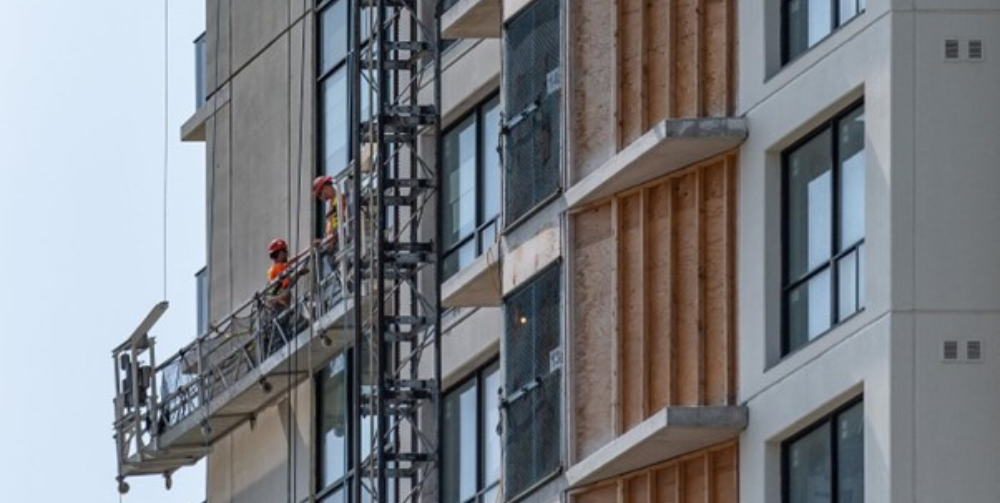As you might expect, the scarcity of essential building supplies is having a strong impact on ongoing and planned construction projects.
Construction
Timber supplies have been affected by a combination of factors such as lack of labour, trading issues and tree disease. Shortages are hitting the UK especially hard, as much of the nation’s wood usually arrives from mainland Europe, and Brexit-related restrictions are now stemming the supply.
Germany is being similarly affected, with many businesses struggling to source even small amounts of timber. These shortages are likely to last until at least 2025, and there are concerns that, despite the boom, they could cause a construction downturn.
Other materials, such as cement, concrete, and steel, are also facing severe circulation issues. While these products are usually in high demand, the dual effect of Brexit-related distribution delays and labour shortages as a result of COVID-19, has meant that suppliers are facing a backlog of requests. Expect steel to be especially hard to find, as production was severely reduced in the early stages of the COVID-19 pandemic, and companies like British Steel have stopped accepting orders for certain products in order to catch up.
Ultimately, the biggest effect the shortages will have on construction is price inflation. Material costs have risen by over 8% in the UK alone, whilst many German contractors have found timber prices to have risen to 3 times their usual rate. As a result, construction companies of all sizes may need to increase labour charges to cover the extra expense.
We can also anticipate issues with fulfilling construction contracts, as many projects will need to readjust their schedules to account for materials shortages. Supply chain problems may even affect project design in rare cases. However, construction contract issues will not affect all businesses in the same way. Larger companies with better stock storage and distribution systems are unlikely to face the same issues as independent businesses that order directly from their suppliers. DIY builders will be some of the most affected, so it might be best to delay any renovation plans for the time being.
Development
As you might expect, a lack of materials will almost certainly impact real estate development. Currently, developers are anticipating a delay on all building projects of a minimum of two months as they struggle to source the materials to finish developments delayed due to COVID-19. There is also an issue with securing key supplies needed to begin work on new construction contracts.
Not only this, but some projects may be impacted by contracting setbacks, as rising costs are sure to cause many existing agreements to be renegotiated. Labour issues will also cause an uneven pattern of delays, as some sectors within the industry struggle with unemployment problems, while others have a host of tradesmen keen to return to work.
Finally, development is likely to be affected by circulation issues. Multi-national developers have the stock capacity to hoard key materials, which reduces delays in their own work but can make the situation worse for smaller or independent contractors. Unfortunately, hoarding not only boosts scarcity and demand, but can cause cost prices to rise even more.
Real Estate Investment
When it comes to real estate investment, two main trends are emerging in the 2021 market. Primarily, expect an emphasis on improving infrastructure, especially in the public sector, with many projects focused on updating healthcare services and strengthening transport routes. Real estate in Hong Kong is expected to grow by 1.5% in 2021 alone, with large-scale development projects — such as railway construction and the Greater Bay Area Initiative — all aimed at boosting connection. Construction investments in Singapore are following a similar trend, with plans to increase the number of healthcare centers across the region.
Investment in the USA is also seeing an upturn, with a projected 2021 growth of over 15%. The scope of projects is slightly broader, but there’s still a clear focus on developing public infrastructure. In response to the pandemic and high demand for medical services, there are plans to build new healthcare facilities and to expand the capacity of existing hospitals and clinics. Not only this, but we can expect an emphasis on updating major roads and river crossings, and moves to strengthen nationwide internet access. However, with materials shortages expected to last well beyond the end of the year, there will be significant delays to planned infrastructure improvements, with many local authorities seeking to renegotiate contracts affected by materials scarcity. The lack of essential materials like timber and steel will have a worse impact on bridge, railway, and healthcare facility construction, compared to road and highway projects.



